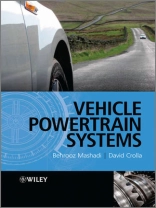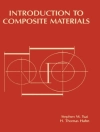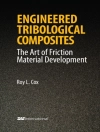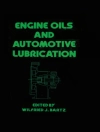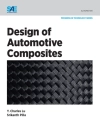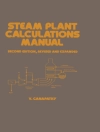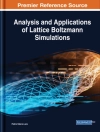The powertrain is at the heart of vehicle design; the engine
– whether it is a conventional, hybrid or electric design
– provides the motive power, which is then managed and
controlled through the transmission and final drive components. The
overall powertrain system therefore defines the dynamic performance
and character of the vehicle.
The design of the powertrain has conventionally been tackled by
analyzing each of the subsystems individually and the individual
components, for example, engine, transmission and driveline have
received considerable attention in textbooks over the past decades.
The key theme of this book is to take a systems approach – to
look at the integration of the components so that the whole
powertrain system meets the demands of overall energy efficiency
and good drivability.
Vehicle Powertrain Systems provides a thorough
description and analysis of all the powertrain components and then
treats them together so that the overall performance of the vehicle
can be understood and calculated. The text is well supported by
practical problems and worked examples. Extensive use is made of
the MATLAB¯(R) software and many example programmes
for vehicle calculations are provided in the text.
Key features:
* Structured approach to explaining the fundamentals of
powertrain engineering
* Integration of powertrain components into overall vehicle
design
* Emphasis on practical vehicle design issues
* Extensive use of practical problems and worked examples
* Provision of MATLAB¯(R) programmes for the reader to
use in vehicle performance calculations
This comprehensive and integrated analysis of vehicle powertrain
engineering provides an invaluable resource for undergraduate and
postgraduate automotive engineering students and is a useful
reference for practicing engineers in the vehicle industry
Table des matières
Chapter 1 Vehicle powertrain concepts
1.1 Powertrain systems 3
1.2 Powertrain components 11
1.3 Vehicle performance 13
1.4 Driver behaviour 18
1.5 Role of modelling 20
1.6 Aim of book 23
1.7 Further reading 24
1.8 References 24
Chapter 2 Power generation characteristics of Internal Combustion Engines
2.1 Introduction 4
2.2 Engine power generation principles 5
2.3 Engine modelling 46
2.4 Multi cylinder engines 91
2.5 Engine torque maps 107
2.6 Magic Torque (MT) formula for enginetorque 117
2.7 Engine Management System 117
2.8 Net output power 117
2.9 Concluding remarks 117
2.10 Further reading 117
2.11 References 117
2.12 Review questions 117
2.13 Problems 117
Chapter 3 Vehicle Longitudinal Dynamics
3.1. Introduction 4
3.2. Torque generators 5
3.3. Tractive force 9
3.4. Resistive forces 26
3.5. Vehicle Constant Power Performance (CPP) 43
3.6. Constant Torque performance (CTP) 71
3.7. Fixed Throttle Performance (FTP) 82
3.8. Throttle Pedal Cycle performance (PCP) 103
3.9. Effect of rotating masses 108
3.10. Tyre slip 118
3.12. Vehicle coast down 129
3.13. Driveline losses 140
3.14. Concluding remarks 149
3.15. Further reading 149
3.16. References 150
3.17. Review questions 151
3.18. Problems 152
Chapter 4 Transmissions
4.1. Introduction 4
4.2. Need for gearbox 4
4.3. Design of gearbox ratios 7
4.4. Gearbox kinematics and tooth numbers 41
4.5. Manual transmissions 54
4.6. Automatic transmissions 127
4.7. CVTs 140
4.8. Concluding remarks 151
4.9. Further reading 152
4.10. References 153
4.11. Review questions 154
4.12. Problems 156
Chapter 5 Fuel Consumption
5.1 Introduction 4
5.2 Engine energy consumption 5
5.3 Driving cycles 11
5.4 Vehicle fuel consumption 19
5.5 Shifting effects 33
5.6 Software 46
5.7 Automated gearshifts 51
5.8 Other solutions for fuel efficiency 57
5.9 Concluding remarks 65
5.10 Further reading 66
5.11 References 68
5.12 Review questions 69
5.13 Problems 71
Chapter 6 Driveline dynamics
6.1 Introduction 3
6.2 Modelling driveline dynamics 4
6.3 Bond graph models of driveline components 11
6.4 Driveline models 21
6.5 Analysis 28
6.6 Concluding remarks 51
6.7 Further reading 52
6.8 References 52
6.9 Review questions 53
6.10 Problems 54
Chapter 7 Hybrid electric vehicles
7.1. Introduction 4
7.2. Types of hybrid electric vehicles 5
7.3. Power split devices 20
7.4. HEV component characteristics 49
7.5. HEV performance analysis 70
7.6. HEV component sizing 82
7.7. Power management 122
7.8. Concluding remarks 135
7.9. Further reading 136
7.10. References 137
7.11. Review questions 138
7.12. Problems 139
A propos de l’auteur
Behrooz Mashadi, Iran University of Science and Technology
Dr Behrooz Mashhadi is an assistant professor in the Department of Automotive Engineering at Iran University of Science and Technology. His areas of expertise are vehicle powertrain systems and vehicle dynamics and control, and he has published widely in these fields in international research journals and conference publications.
David A Crolla, University of Sunderland
David Crolla’s activities are concentrated on engineering consultancy work, in particular specialised short courses and expert witness cases in automotive engineering. He also retains strong academic links with the Universities of Leeds, Cranfield and Sunderland. His specialism is in vehicle dynamics and control, and he has authored over 200 journal and conference papers in this subject area with particular topics of interest covering the ride, handling, safety, stability and braking of vehicles. He has worked extensively with industrial partners and applications have included passenger cars, land speed record vehicles, racing cars, SUVs, off-road vehicles and commercial vehicles.
He is an Emeritus Professor of Automotive Engineering at the University of Leeds, and visiting Professor at the University of Sunderland. He is series editor for a textbook series on Automotive Engineering for Elsevier.
